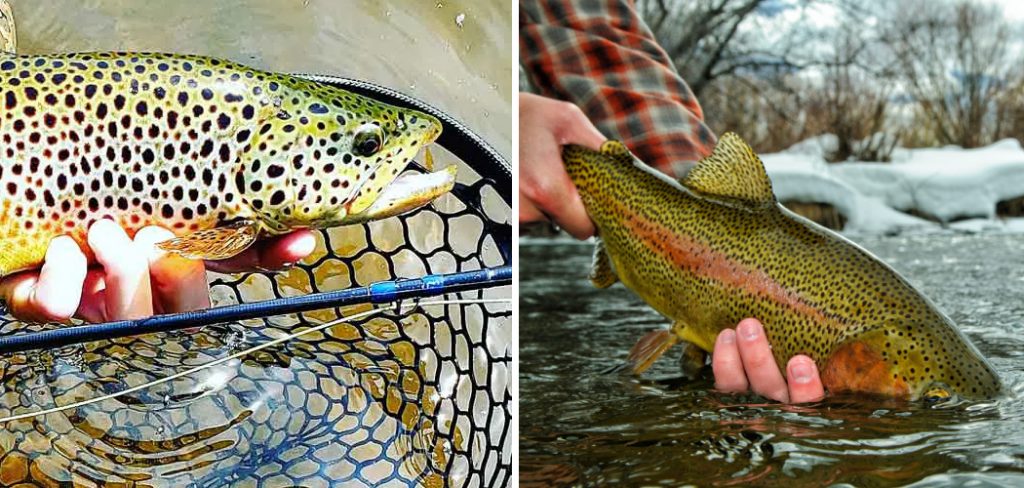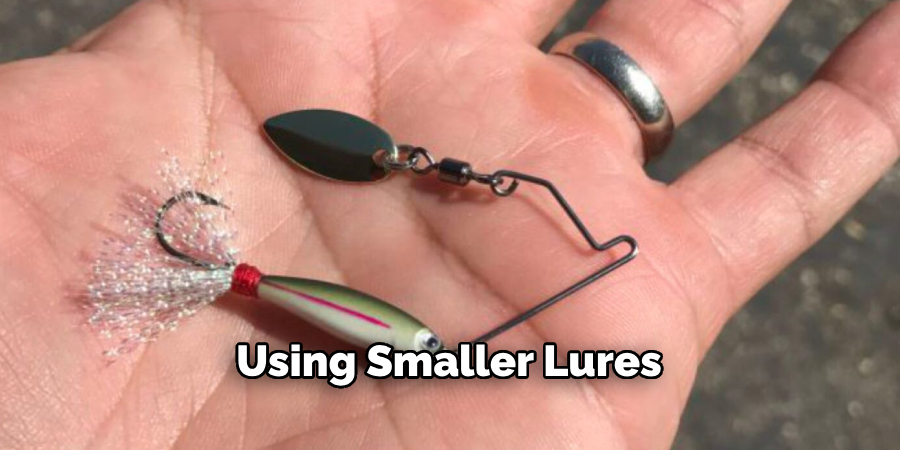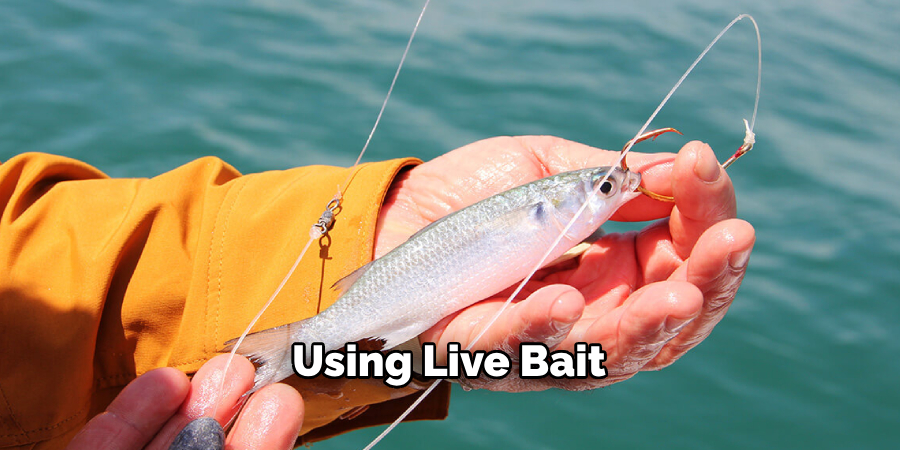As winter descends and temperatures plummet, many anglers may be tempted to stow away their fishing gear, believing that trout become elusive in colder waters. However, seasoned anglers know that winter presents a unique and rewarding opportunity for those who understand the intricacies of catching trout in these chilly conditions.

Successfully targeting trout during the winter months requires a nuanced approach, considering the impact of cold temperatures on trout behavior and their preferred habitats. This article aims to guide how to catch trout in the winter. From selecting the right gear and understanding trout feeding patterns in cold water to identifying the most productive locations, we will explore the key elements that can make winter trout fishing not only possible but incredibly satisfying for those willing to embrace the challenges of the season.
Importance of Winter Trout Fishing
Winter is often seen as a time when most fishermen put away their gear and wait for warmer weather. However, for trout anglers, winter can be an exciting and challenging time to test their skills. While the cold weather may deter some from venturing out onto the water, there are many benefits to winter trout fishing that make it worth the effort.
One of the main reasons why winter trout fishing is so rewarding is because the fish are more active and aggressive during this time of year. As the water temperature drops, trout become more metabolically active and need to eat more in order to survive. This means that they are constantly on the lookout for food, making them easier to catch.
Changes in Trout Metabolism and Feeding Habits during Winter
As the temperatures drop and winter sets in, trout undergo significant physiological changes that affect their metabolism and feeding patterns. For anglers, this means adjusting your fishing techniques to effectively catch trout in the colder months.
Trout are cold-blooded creatures, meaning their body temperature fluctuates with the surrounding environment. As water temperatures decrease, so does the metabolism of trout. This results in a decrease in their activity level and appetite. Therefore, it is essential to understand these changes in order to successfully catch trout during winter.
Understanding Trout Metabolism
Trout require a certain amount of energy to survive, which they obtain from their food sources. During the winter months, their metabolism slows down significantly due to the colder water temperatures. This means that they do not need to consume as much food to sustain themselves. As a result, their feeding patterns change, and they become more selective in their food choices.
Types of Trout Food Sources in Winter
In the winter, trout have limited options when it comes to their food sources. Insects and other aquatic life that are abundant in warmer months are scarce during winter. This means that trout have to rely on other food sources such as small fish, crustaceans, and even smaller trout. As these food sources are less active in colder water, trout will tend to be more opportunistic feeders during this time.
10 Methods How to Catch Trout in the Winter
1. Use Smaller Lures and Bait
During the winter, trout are less active and therefore less likely to chase after larger prey. Using smaller lures and bait, such as small jigs or worms, can increase your chances of catching a trout in the cold weather. Additionally, using bright or flashy colors can help attract the attention of the trout.

2. Fish in Deeper Waters
As the water temperature drops, trout will seek out deeper waters where the temperature is more stable. Look for areas with deeper pools or slower moving currents to increase your chances of catching a trout. This may require using a heavier weight or sinker to get your bait or lure deeper into the water.
3. Fish during Warmer Parts of the Day
Trout are cold-blooded creatures and their activity levels will decrease in colder temperatures. To maximize your chances of catching a trout, try fishing during the warmest parts of the day when the water temperature may be slightly higher.
4. Use Live Bait
In colder temperatures, fish tend to be less active and may not be as attracted to artificial lures. Using live bait such as minnows or nightcrawlers can entice a hungry trout into biting. These live baits can be rigged on a hook with split shot sinkers to keep the bait at the desired depth.

5. Slow down Your Retrieval Speed
During the winter, trout are less likely to chase after fast-moving prey. Slowing down your retrieval speed can make your lure or bait more appealing to a sluggish winter trout. Try using a slow, steady retrieve with occasional pauses to mimic the natural movements of prey in cold water. This technique can be especially effective when fishing in deeper pools or slower-moving sections of the river.
6. Focus on Natural Food Sources
In colder temperatures, trout will primarily feed on natural food sources such as insects and small fish. Pay attention to what types of food sources are present in the area you are fishing and try using imitations or similar baits to attract a bite. Understanding the natural food sources available to trout in the winter can greatly increase your chances of catching them.
7. Use Scent Attractants
In cold water conditions, visibility may be limited for fish so they rely more heavily on their sense of smell to locate food. Adding scent attractants to your lures or baits can make them more enticing to a winter trout. Some popular scent attractants for trout include anise oil, garlic, and shrimp scents. Experiment with different scents to see which ones work best in your local waters.
8. Try Ice Fishing
Ice fishing is a popular method for catching trout in the winter months. By drilling a hole through the ice and using specialized equipment, you can access the deeper waters where trout are more likely to be found.

To get started with ice fishing, you will need to invest in some basic equipment. This includes an ice auger to drill the hole, an ice skimmer or scoop to remove ice and slush from the hole, and a sturdy ice fishing rod and reel.
9. Use a Fish Finder
Using a fish finder can help you locate schools of trout in deeper waters. This can save you time and increase your chances of catching a trout during the winter. Fish finders work by using sonar technology to detect fish and display them on a screen.
10. Be Patient and Persistent
Fishing for trout in the winter requires patience and persistence. The cold temperatures may make it more challenging to catch a fish, but with determination and perseverance, you can still have success on the water. However, it is important to keep in mind that trout are more sluggish in colder water and may not be as actively feeding. This means you may need to adjust your tactics and presentation to entice a bite.
Things to Consider When Catching Trout in the Winter
- Location: Unlike other seasons, trout tend to migrate towards deeper waters in the winter. This is because deep water retains heat better than shallow water, making it more comfortable for the fish. Lakes and ponds with depths of at least 20 feet are likely to have active trout during the winter.
- Time of day: In the winter, trout tend to be more active during midday when the water temperature is slightly warmer. This means you may have better luck fishing during this time rather than early in the morning or late in the evening.
- Bait and lures: As the water temperature drops, so does the metabolism of fish. This means they will not be as aggressive towards larger, more colorful lures. Instead, opt for smaller and more natural-looking bait or lures that imitate their prey in the winter.
- Line and leader: When fishing for trout in the winter, it is important to choose a line and leader that is strong enough to handle larger fish but also sensitive enough to detect subtle bites. Monofilament line is a good choice for its sensitivity and strength.
- Be patient: Winter trout fishing requires a lot of patience. The fish may not be as active, and bites can be hard to detect in the cold water. Take your time and wait for the fish to come to your bait or lure.

Conclusion
In conclusion, fishing for trout in the winter can be a challenging yet rewarding experience. By following these tips and techniques on how to catch trout in the winter, you can increase your chances of catching a beautiful trout during the colder months. Remember to research the body of water you will be fishing in and adjust your tactics accordingly. Patience and persistence are key when it comes to winter trout fishing.
Don’t forget to dress appropriately and stay safe on the ice. When you finally feel that tug on your line and reel in a gorgeous rainbow or brown trout, it will all be worth it. So what are you waiting for? Bundle up, grab your gear, and head out to the nearest river or lake to put these tips into action! Happy fishing!
About the Author
Jennifer Branett is the author of Fishy Kayak and an expert in fish-related fields, with over 10 years of experience. Her work blends passion for fishing with a commitment to conservation.
Educational Background
Degree: Bachelor’s in Marine Biology
Institution: University of California, Santa Barbara
Specializations: Aquatic ecosystems, fish behavior, and sustainable practices
Professional Experience
Conservation Projects:
Collaborated with local organizations to restore aquatic habitats
Developed educational programs on sustainable fishing practices
Publications:
Authored articles for fishing magazines and environmental journals
Featured speaker at fishing expos and conservation conferences
Key Areas of Expertise
Fishing Techniques:
Kayak fishing strategies
Freshwater and saltwater fishing methods
Environmental Stewardship:
Advocacy for sustainable fishing
Promoting biodiversity in aquatic environments
Awards and Recognition
Recipient of the [Specific Award Name] for contributions to marine conservation
Recognized as a leading voice in the fishing community by [Organization/Publication Name]
Community Engagement
Workshops and Seminars:
Regularly hosts events to educate anglers on sustainable practices
Engages with youth programs to inspire the next generation of fishers
Online Presence:
Maintains an active blog sharing tips, stories, and conservation efforts
Engages with followers on social media to promote fishing ethics
Personal Interests
Enjoys kayaking in scenic locations
Passionate about photography, capturing the beauty of nature
Advocates for local conservation efforts in her community
